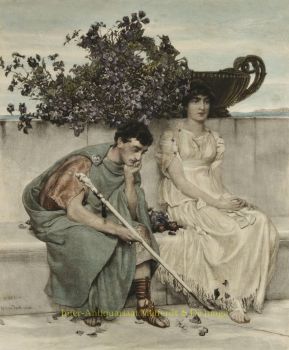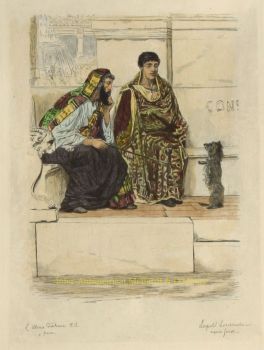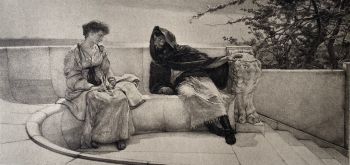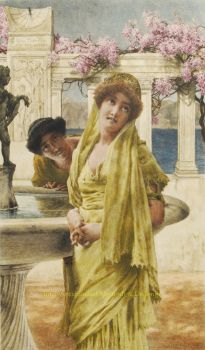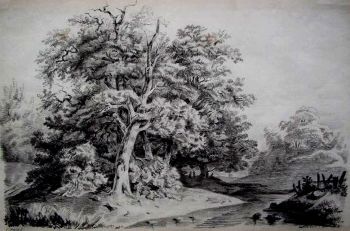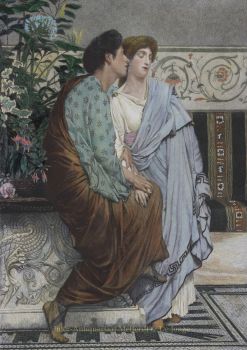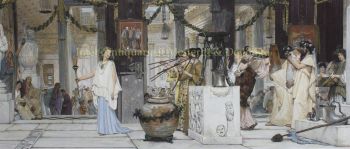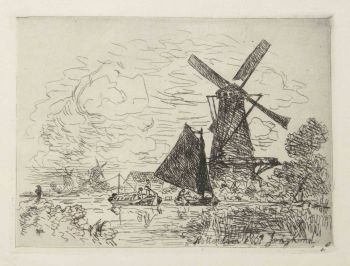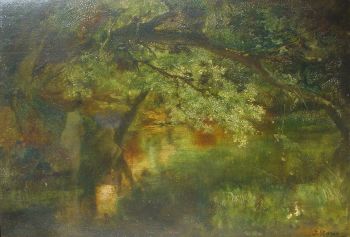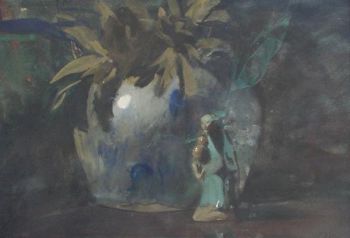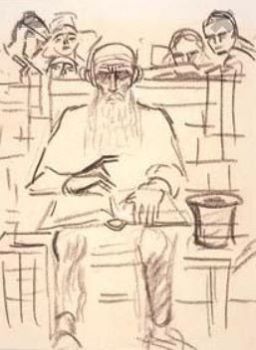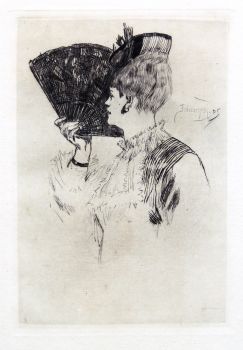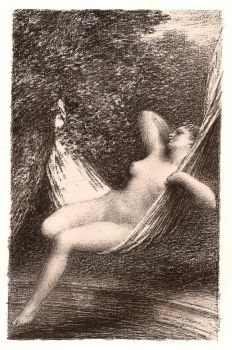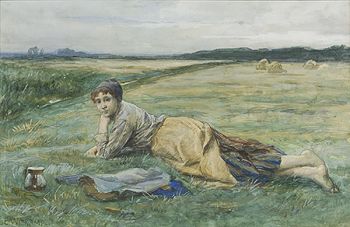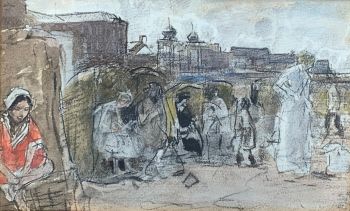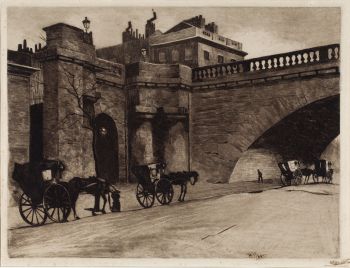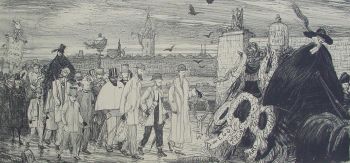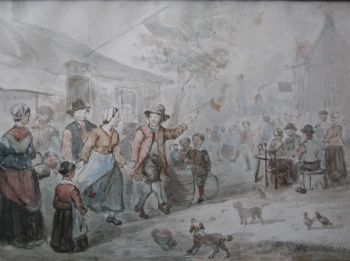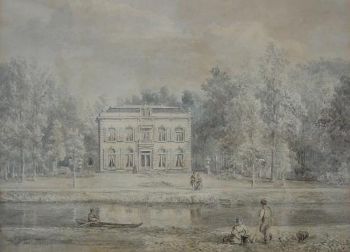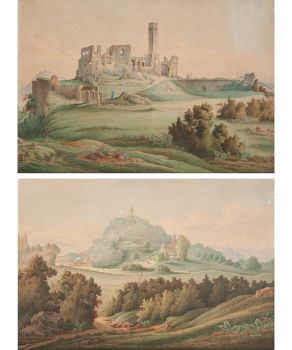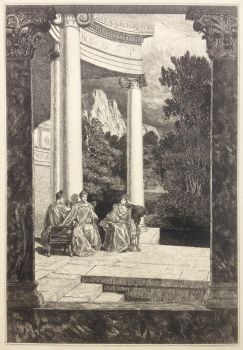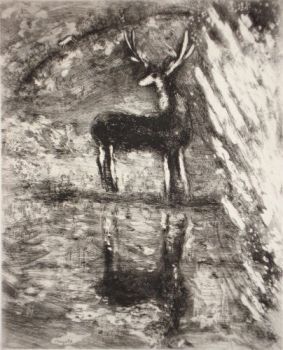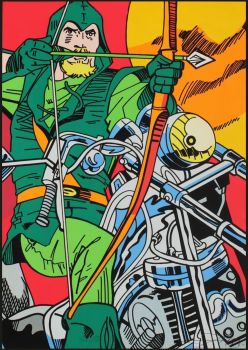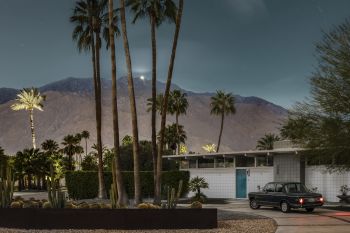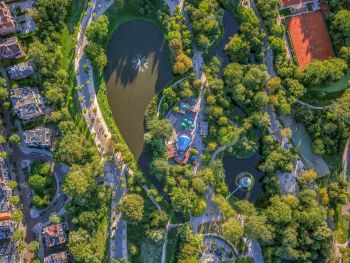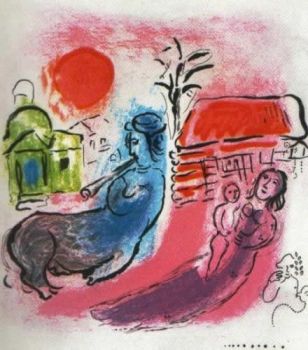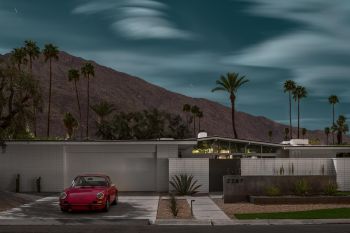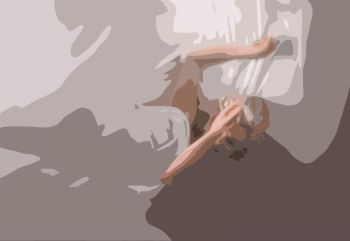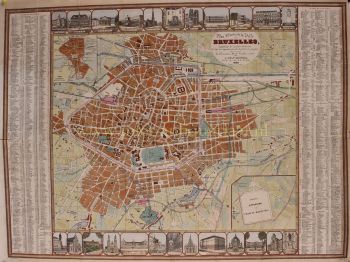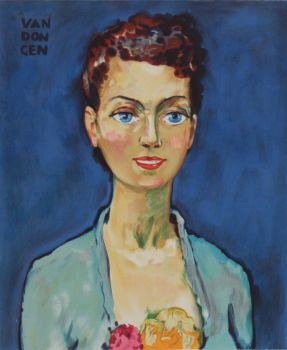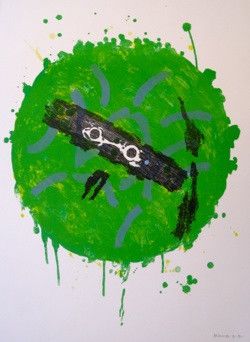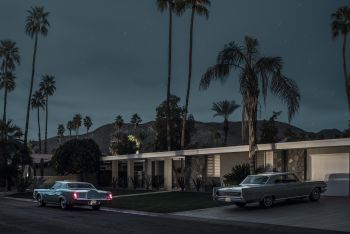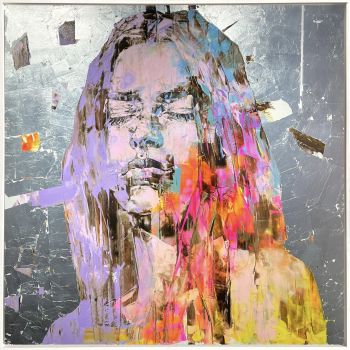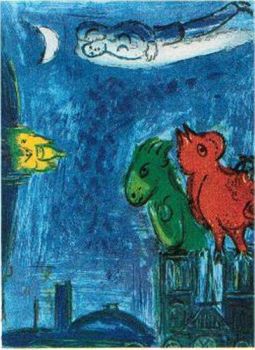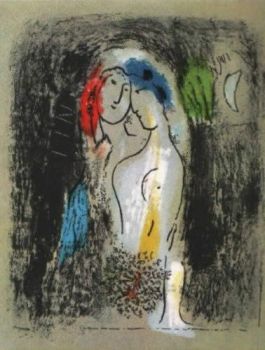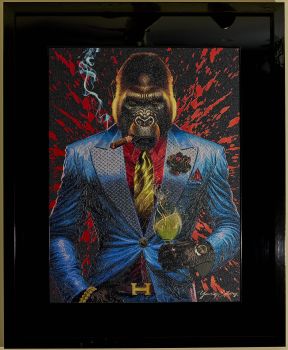Sir Lawrence Alma-Tadema and his forgotten etchings and engravings
Few people are familiar with the name Alma-Tadema, better known as 'Sir Lawrence Alma-Tadema'. Even less people know that he was a world-famous Dutch painter during the Victorian period. Today, Alma-Tadema's paintings hang in the most famous museums or are in the possession of important private collections. Besides paintings, Alma Tadema also produced and sold beautiful etchings and engravings during his lifetime. The few original engravings that have survived in time are nowadays sought-after collectors' items. In this article, we tell you more about Alma-Tadema's life, his paintings and especially his engravings, which are still for sale for the 'common' man nowadays.
Alma Tadema and his early years
In 1840 Lourens Alma-Tadema lost in his father at the age of 4. His father was a notary in the Frisian town of Donryp. After his death the Tadema family went through a difficult financial period.
Although it made more sense for Lourens to become a lawyer later on, his mother recognised his artistic talent and stimulated him to practice painting and sketching early in the morning, before going to school.
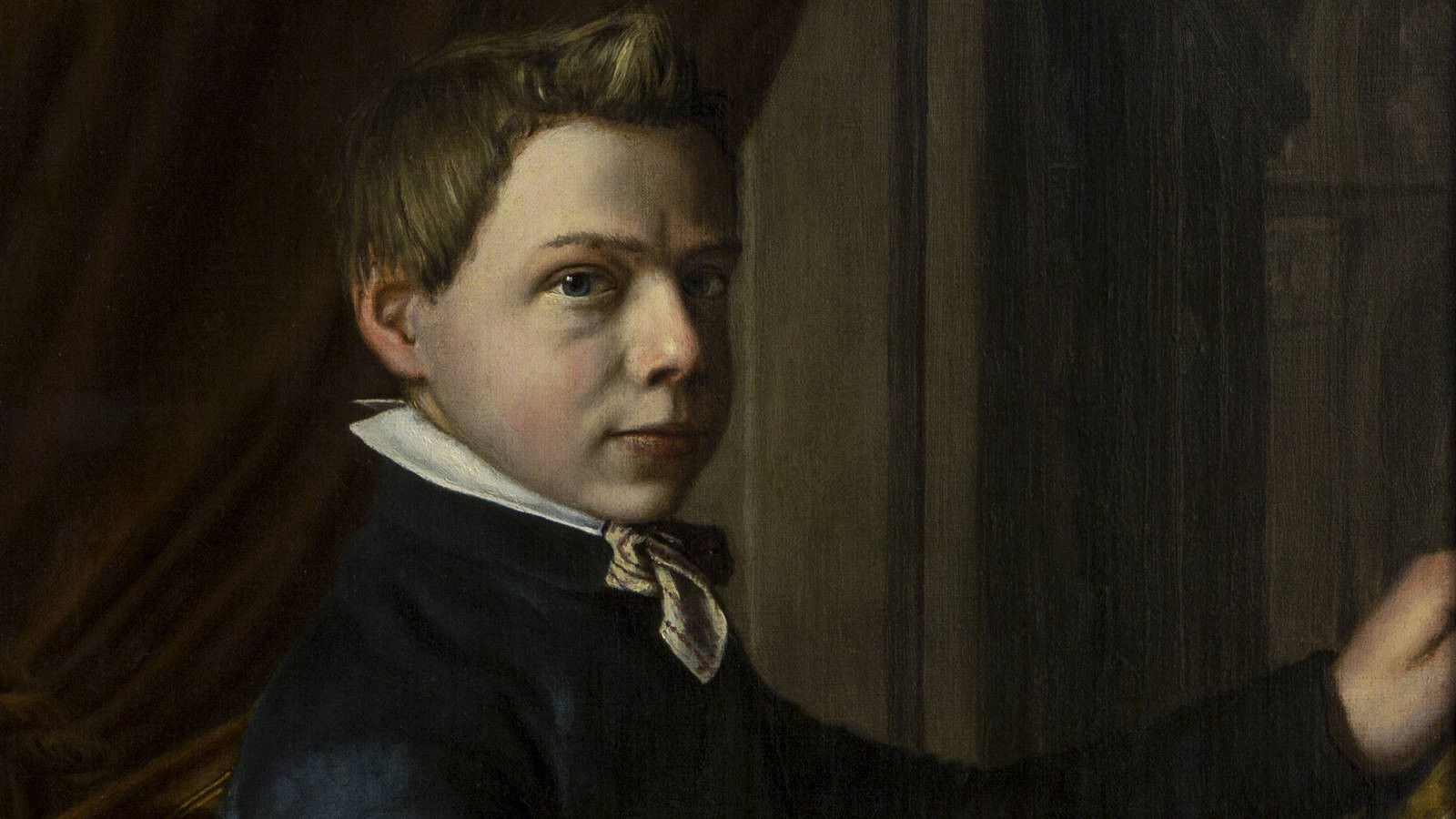 Self-portrait Lourens Alma Tadema at the age of sixteen, a gift to his mother, 1852
Self-portrait Lourens Alma Tadema at the age of sixteen, a gift to his mother, 1852
Alma-Tadema world-famous except in the Netherlands
Strikingly enough, after his school period, the 'Frisian' Lourens was not admitted to any of the Dutch art schools, which were located in the major Dutch cities. In the end it was the Royal Academy of Antwerp in Belgium, which did recognise his talent.
Nobody could have ever suspected at the time that he would later become one of the most famous painters of the British empire and that, in 1899, he would even be knighted as 'Sir Lawrence Alma-Tadema' by Queen Victoria.
He would be the third Dutchman ever to be promoted to British nobility. After his death his body was buried in a crypt of St Paul's Cathedral in London. A very great honour for someone who was not British by birth.
The funeral service was attended by many British and Dutch dignitaries, including representatives of the British and Dutch royal families.
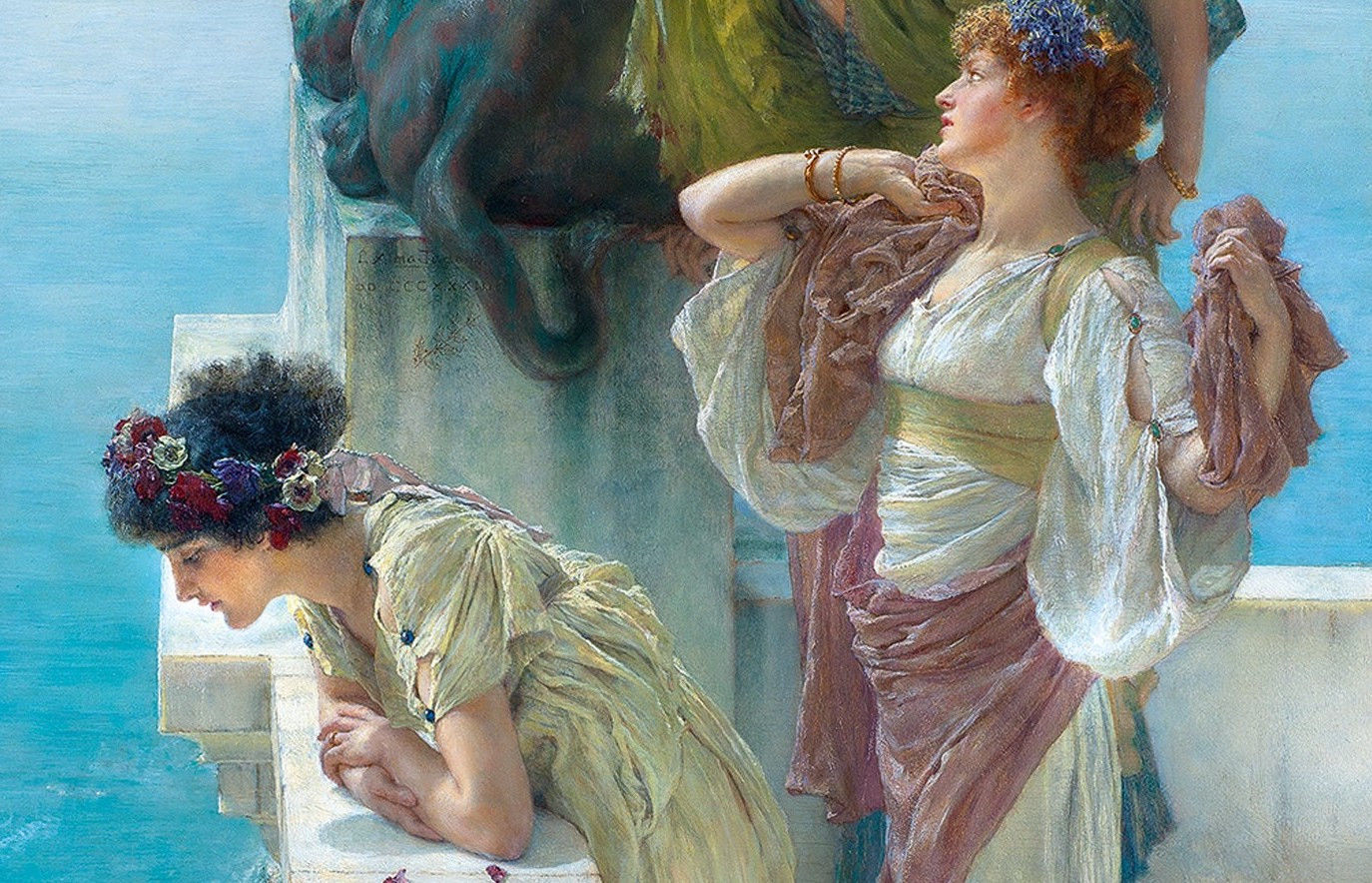 Detail of the painting "A favourable Vantage Point", 1895 by Lawrence Alma-Tadema
Detail of the painting "A favourable Vantage Point", 1895 by Lawrence Alma-Tadema
Alma-Tadema as a businessman
Lawrence Alma-Tadema would have said: "as long as I paint, I am an artist, but when the work is finished, I am a businessman". Alma-Tadema made about 450 paintings during his life, all of which were given a unique 'opus number'.
This was mainly to prevent the copying of his works and to protect his own works against forgeries. The making of these paintings was often a time-consuming process and in order to get money in between he made reproductions of his best paintings. Some of these reproductions he kept for himself and some he gave to his dearest friends but most of them he sold.
These reproductions consisted of 'steel engravings or etchings' (hand etched) and on the other hand of 'heliogravures' (photo print after the original painting). Tadema very strictly guarded the quality of these reproductions.
He selected only the best engravers for his engravings and etchings, such as Auguste Blanchard and the Dutchman Leopold Löwestijn. For the photo- or heliogravures he used, among others, well known 'Berlin Photographic Co'.
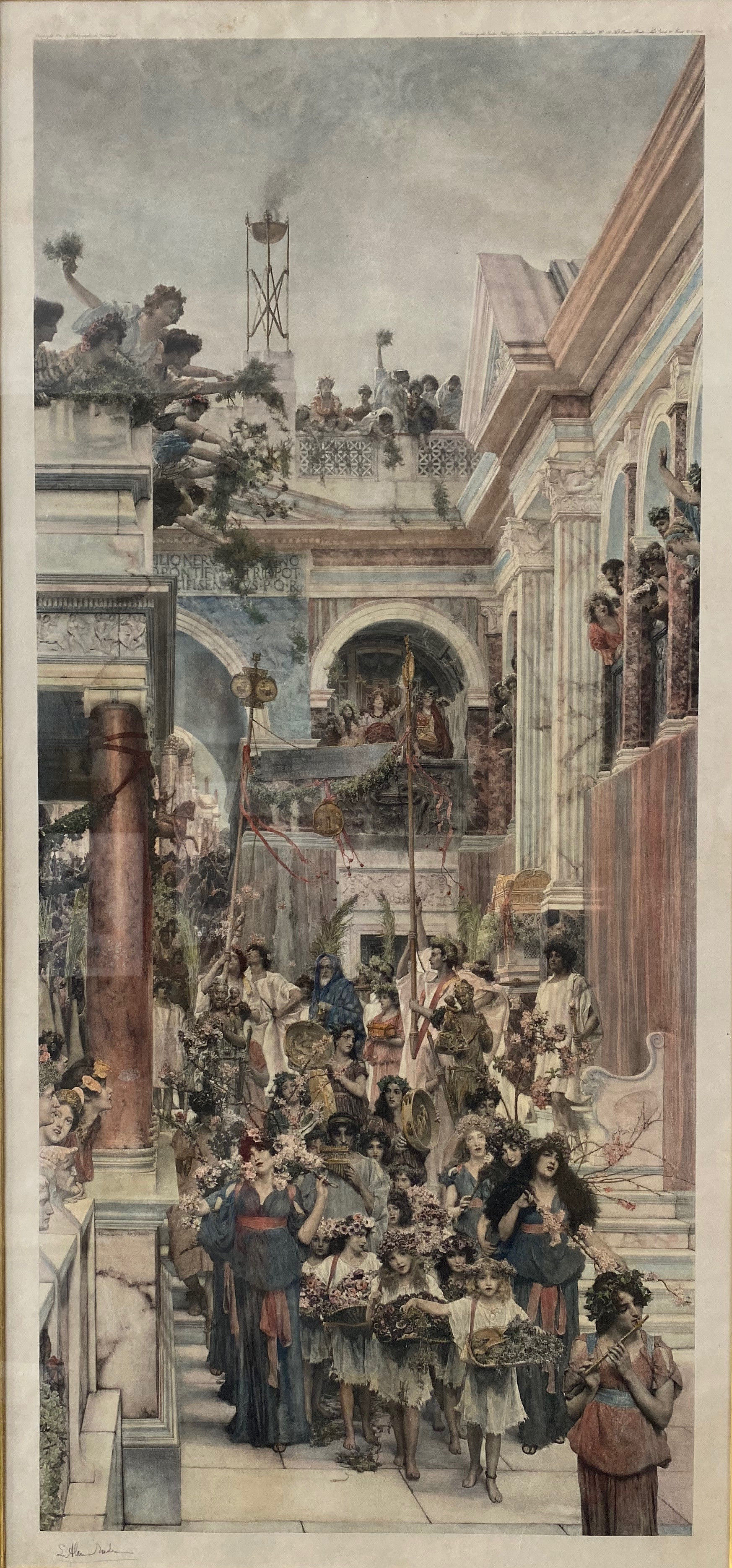 Example of an original engraving/ etching after the painting 'Spring', 1894, by Alma Tadema, see also Gallerease
Example of an original engraving/ etching after the painting 'Spring', 1894, by Alma Tadema, see also Gallerease
The etchings and engravings by Alma-Tadema
The printruns of these reproductions were often no more than 800 pieces, which were divided into different quality classes. The finest and largest engravings (often not more than 200 pieces) were personally signed by Sir Lawrence-Tadema together with the name of the engraver. These engravings or photogravures were printed on the best quality paper and some of them were afterwards coloured by hand.
It was said that some of the engravings were more beautiful and finer than the original paintings! His etchings and engravings were sold and distributed to the far corners of the British Empire. As a result, a large public at that time knew his name and images. Read for more about this: 'R.Verhoogt, Art in reproduction'.
 Alma-Tadema 'Reading from Homer', original etching/ engraving, printed in c.a.1885
Alma-Tadema 'Reading from Homer', original etching/ engraving, printed in c.a.1885
The reproductions of his paintings (although not cheap) were sold by the well known galleries of that time in London, New York and Amsterdam, such as for example Frans Buffa & Sons in the Kalverstraat in Amsterdam.
The shopwindows with the reproductions hanging for the windows were at that time also called the 'poor mans' galleries'. Those who could not afford to buy the original painting or go to the exposition, could admire it from the street.
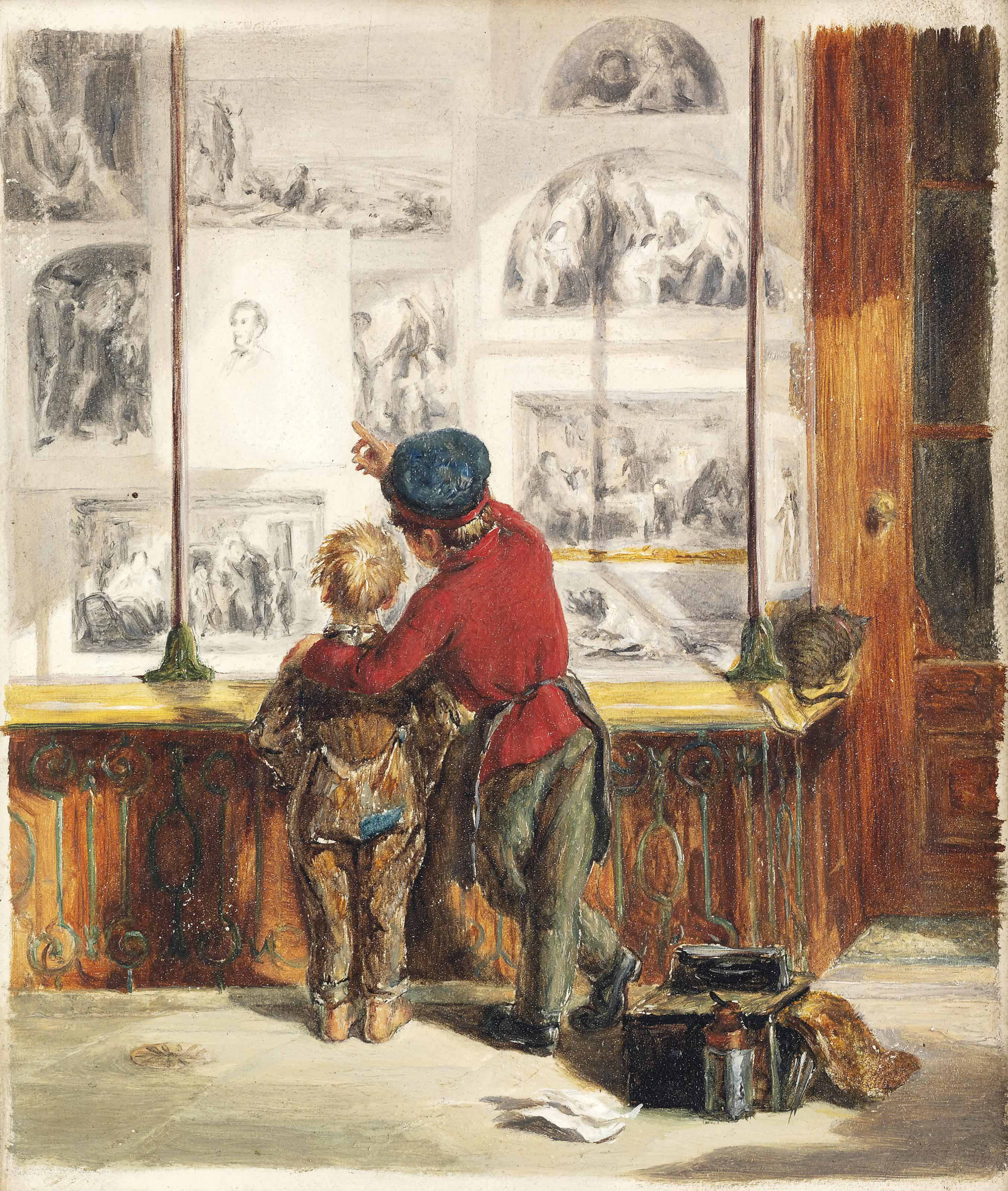 'A poor man's gallery' by William Macduff, Shaftesbury, or Lost and Found, 1844-1876
'A poor man's gallery' by William Macduff, Shaftesbury, or Lost and Found, 1844-1876
His etchings and images were distributed worldwide and sold to the far corners of the British empire. There were also many prints of his images in the newspapers and art magazines in that time, so that a large public knew the images of Tadema and he became a 'world famous artist'. See for original etchings and engravings also at Gallerease.
Alma-Tadema's scientific approach
Although the Victorian period saw many romantic scenes painted from classical antiquity, Tadema was the first to try to paint reality based on the ruins, wall paintings and artefacts excavated in Pompeii and Herculanom.
For example he used real excavated objects from museums in Naples and later he even travelled to Egypt for inspiration. He made accurate sketches and measurements of all kind of ancent objects and even owned copies of ancient Roman silver objects.
One of the critics in his time remarked that he was sometimes more of an archaeologist and scientist than an artist. The fact that his works were regarded as the 'real antiquity' for a long period of time, show how detailed and credible his works where.
Many of his Roman and Egyptian paintings were used most a century later as a decor a for large Hollywood films such as The Gladiator, The Ten Commandments, Exodus; Gods and Kings and Ben Hur.
 'Caracalla and Geta, Bearfight in the Colloseum AD 203'by Lawrence Alma-Tadema, as an original engraving at Gallerease
'Caracalla and Geta, Bearfight in the Colloseum AD 203'by Lawrence Alma-Tadema, as an original engraving at Gallerease
Alma Tadema out of fashion and into oblivion
Although Tadema was very popular in the period between 1870 and 1910, at the end of the 19th century the classical, the romantic and Victorian style became out of fashion due to new art movements such as Impressionism.
In the period between 1915 and 1970 the works of Tadema were almost forgotten. The decorative frames of many of his etchings and some paintings in particular were reused for paintings that were more mor in 'fashion' in that time. Many engravings didnot survive the trend of that time.
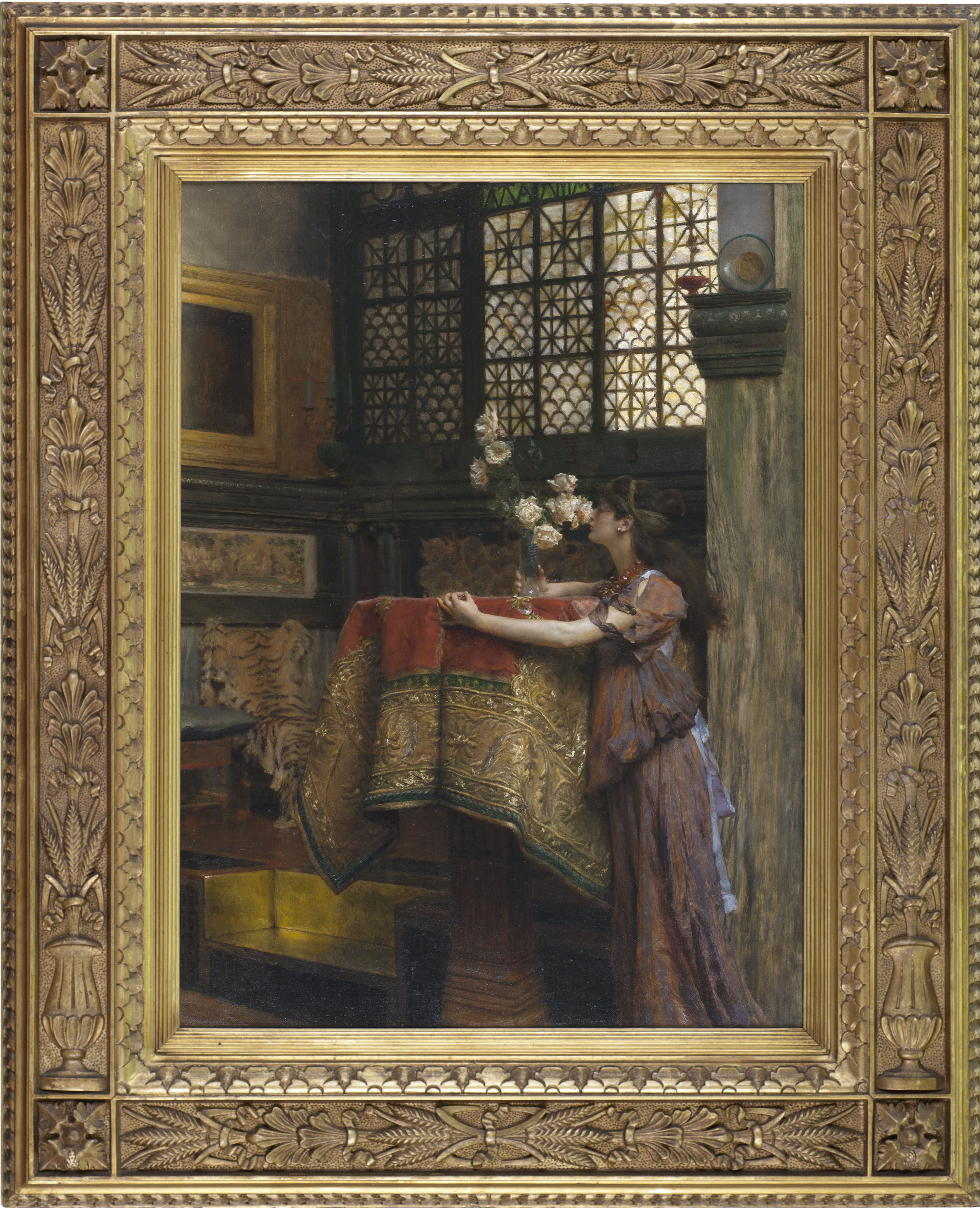 Painting by Alma-Tadema, 'In my Studio' with a beautiful frame, 1893
Painting by Alma-Tadema, 'In my Studio' with a beautiful frame, 1893
This is also how the story goes of the original painting of Tadema's 'The Finding of Moses', see also image in the header at the very top. It was dumped in the 1970's and it has been taken out of its frame and taken by a pizza restaurant owner, who hung it in his restaurant as wall decoration. Not so long ago this same painting was sold for no less than 35 million dollars!
So there has been quite a revival and revaluation of his works lately. This also applies to the remaining, vulnerable paper engravings, many of which have been lost because they were out of fashion and because of the acidification of the paper (they did not use acid-free paper and passe-partous in those days).
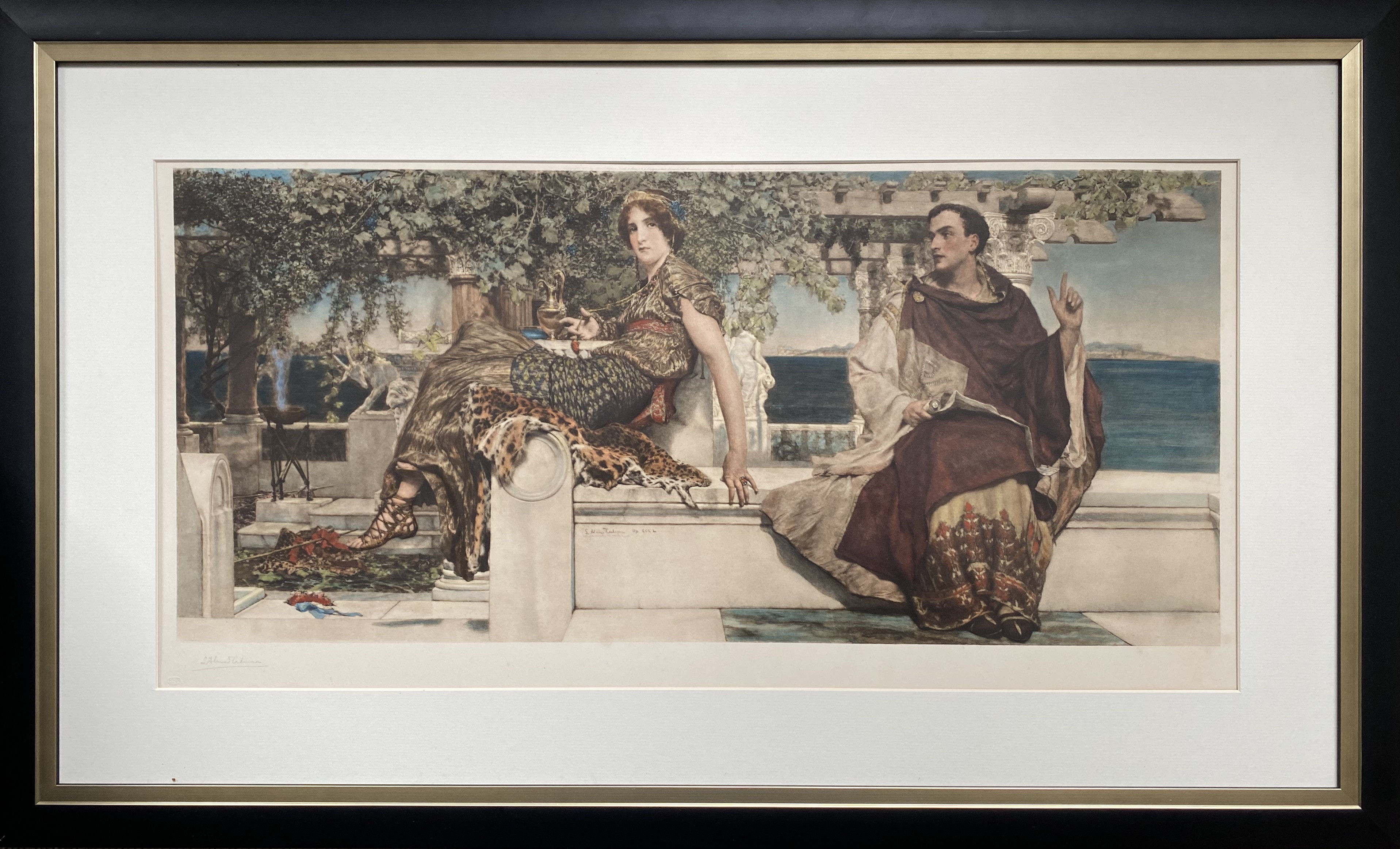 Original signed and handcoloured photo- or heliogravure 'The conversion of Paula by St. Jerome' by Lawrence Alma-Tadema, 1899
Original signed and handcoloured photo- or heliogravure 'The conversion of Paula by St. Jerome' by Lawrence Alma-Tadema, 1899
Original artworks of Sir Lawrence Alma-Tadema for sale
Though some of the beautiful engravings and heliogravures of Sir Lawrence Alma-Tadema have survived and ar fo sale. For the largest collection of original and handcoloured etchings and engravings of Sir Lawrence Alma Tadema for sale, please have a look at our website Gallerease.
Are you interested to read more about the etchings and engravings of Sir Lawrence Alma-Tadema? Pleas check out the interview with Robert-Jan de Jonge van Mefferdt & de Jonge about Sir Lawrence Alma-Tadema!
*In the header an example of a beautiful photogarvure of 'The finding of Moses' by Lawrence Alma-Tadema




